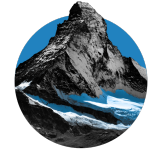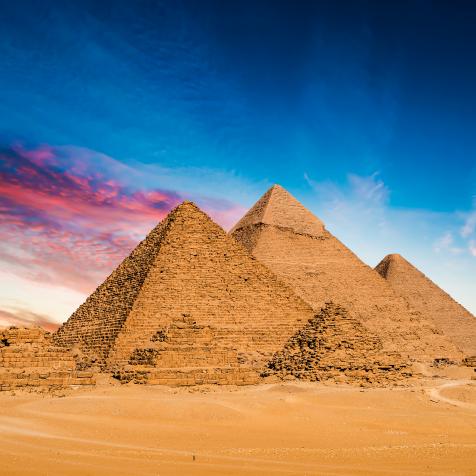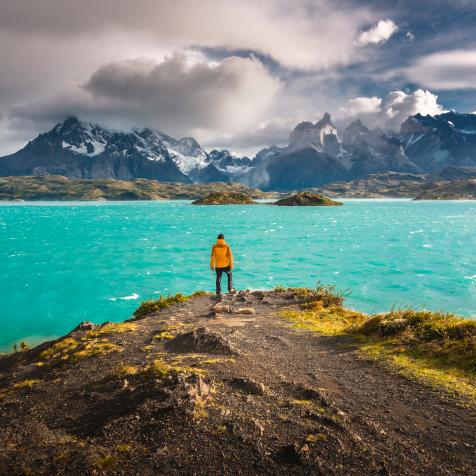
Anup Shah
Collateral Damage: Assessing the Impact of Coronavirus on Wildlife Populations
From the pages of The Explorers Journal, Michael J. Manyak, M.D., FACS, underscores the importance of understanding how COVID-19 can affect certain wildlife populations, including the most vulnerable ones.
Various aspects of viral infection with SARS-CoV-2 coronavirus (Covid-19) have dominated the news cycle for several months now, yet some may find it rather difficult to sift out the accurate data from speculation or myth as we await release of a viable vaccine. What is evident is that we are in the fourth inning of a nine-inning game. Thwarting this disease will require a combined approach with goals of improved detection, an effective vaccine, and development of treatment. Until these are accomplished, with at least partial herd immunity and effective treatment, travel and most exploration will be on the back burner due to regulations and restrictions on international travel. When travel does resume, we must be aware of the implications of disease spread.
Covid-19 infects human cells through activation of two receptors. The first, the ACE2 receptors, are present in blood vessels, heart, brain, kidney, lung, intestines, and upper nasal passages. The second, TMPRSS2, is also widely present in tissues and is activated by male hormones. Many effects of the disease are manifested because of blood vessel damage.
While we learn more about the disease and its presentations in humans, little attention has been paid to the effects of it on other animals, save for a few curious researchers, including Explorers Club Fellow and Lowell Thomas awardee Martin Nweeia, who, for nearly two decades, has done field research in the Arctic on narwhals. His work is highlighted in a permanent exhibit in the Smithsonian National Museum of Natural History. He belongs to a consortium of genetic researchers who have just published an extensive evaluation of ACE2 receptors in vertebrates in the Proceedings of the National Academy of Sciences.
Their research built on previous findings that coronaviruses SARS-CoV (the original SARS) and SARS-CoV-2 (Covid-19) likely had ancestors that arose in bats. This was followed by transmission to an intermediate host in an extended host range that includes primates and other mammals. The authors cite literature that at least one different human coronavirus (HCoV-OC43) appears to have originated in cattle or swine and was associated with a human pandemic that emerged in the late nineteenth century. Furthermore, it is now known that coronaviruses can be transmitted from bats to other wildlife species and humans, and from humans to tigers and pigs.

Simon Barnes / EyeEm
Why is this important? It is essential to understand the host range of these coronaviruses to improve the ability to predict and control future pandemics. For all of us who interact with other species, whether in domestic or remote locations, this information is critical when it comes to protecting wildlife in native habitats and under human care, particularly nonhuman primates, which may be susceptible to Covid-19. This is especially true for endangered species, where a disease can decimate small populations like narwhals or great apes.

dottedhippo
The extent of the potential for Covid-19 to infect vertebrates is staggering. The research group evaluated 410 species (252 mammals, 72 birds, 65 fishes, 17 reptiles, and 4 amphibians) using a scoring scale that rated each species according to the ability for coronavirus to bind to 25 different known binding sites. The scoring scale categories ranged from very high and high to medium, low, and very low. The higher the score, the higher the probability of becoming infected. The 18 animals in the “very high” category were all Old World primates and great apes. There are 28 species in the high category: 12 whale and dolphin species, 7 rodents, 3 deer, 3 lemur species (primates), 2 anteater species, and an Old World monkey. Nine of 43 carnivore species scored medium on the scale, while another 9 scored low and 25 scored very low.
The carnivores scoring medium were exclusively cat species, including the domestic cat and Siberian tiger. Also scoring medium were several important wild and domesticated hoofed animals, such as domesticated cattle, bison, sheep, goat, water buffalo, Masai giraffe, and the Tibetan antelope. Interestingly, all bats scored low or very low, including the bat suspected of being the culprit intermediate host for transmission of the coronavirus to humans. This paradoxical last finding strongly supports further study of transmission in animals and proof that their ACE2 receptor expression correlates with acquiring the disease.

Sorin Furcoi
This complexity of transmission may include other routes of infection. Given that 25 percent of Covid-19 patients have diarrhea and 34 percent have nausea/vomiting, poorly controlled sewage disposal systems portend potentially disastrous impacts on animal populations in addition to humans. Clearly, we need to learn more about this.
This research has greatly expanded the number of candidate intermediate hosts and identified many additional threatened species that could be at risk for SARS-CoV-2 infection via their ACE2 receptors. Furthermore, this is believed to be the first study in conservation that has proactively identified a potential high risk based on specific species genetic expression. It will be fascinating to see how the line of research undertaken by Nweeia and his colleagues further develops.
About Michael J. Manyak, M.D., FACS
A Fellow of The Explorers Club since 1992 and a recipient of its Edward C. Sweeney Memorial Medal, Michael J. Manyak is an explorer, author, physician, and corporate medical executive. Manyak is a contributing editor of The Explorers Journal and the author of the acclaimed health and travel book, Lizard Bites & Street Riots.
This story originally appeared in the pages of The Explorers Journal, the official quarterly of The Explorers Club since 1921. From vast ocean depths to the frontiers of outer space, The Explorers Journal offers readers first-hand reporting from those pushing the limits of knowledge and human endurance. For more stories, subscribe today.



















